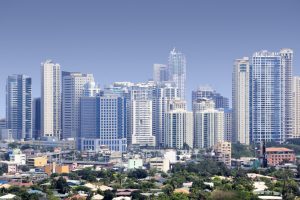Budget season is upon us, and the Philippines is among the many countries in Southeast Asia finalizing their fiscal plans for 2024. So, what’s in it? Somewhat surprisingly, the 2024 budget plans to continue pumping money into the economy and borrowing quite heavily to do so.
Total cash appropriations next year are projected at P 5.768 trillion (about $102 billion), a 9 percent increase from 2023. This will bring the deficit to P 1.36 trillion ($24 billion), or 5.1 percent of GDP. While this would be a lower deficit-to-GDP ratio than is expected in 2023, it is still on the high side. Total net financing needs could reach P 2.2 trillion ($39 billion).
Deficits and debt are not necessarily bad for an economy. But they are risky in the current global financial environment where a number of factors (a surging dollar, inflationary pressure, the Federal Reserve keeping rates high) are forcing interest rates up in the Philippines. Higher interest rates mean higher borrowing costs, and that makes deficits riskier than they otherwise would be.
To reduce some of this risk, the government is anticipating big revenue increases next year, as new tax measures and better enforcement come into effect, including an excise tax on sweet drinks and junk food and a VAT on digital services. The 2024 budget is projecting P 4.2 trillion in revenue ($75 billion), a 15 percent increase compared to 2023. Of course, if these tax reforms fail to meet their targets, the deficit will widen even further.
Budget planners are also placing a lot of faith, as they did last year, in macroeconomic conditions remaining in their favor. The Philippine economy grew strongly in 2022, at 7.6 percent. Another strong year was expected in 2023, with GDP projected to grow between 6-7 percent. It now looks like that was too optimistic, and the Asian Development Bank thinks economic growth in 2023 will come in at 5.7 percent.
Despite global economic headwinds, the 2024 budget assumes similarly strong growth of between 6.5-8 percent and inflation remaining below 4 percent. The peso is expected to move between 53 and 57 to the dollar. These are, I would say, pretty optimistic assumptions. GDP growth of 6 percent in 2024 would probably be considered a good outcome, let alone 8 percent. The peso is trading at the upper limit of the expected band right now, at 56.8 to the dollar and inflation, which had shown signs of moderating, is rising again thanks to spiking rice prices.
Inflationary pressure and a surging U.S. dollar are especially worrisome, as they will likely force Bangko Sentral ng Pilipinas to keep interest rates high. When borrowing this much to fund the government, you would rather see interest rates going in the opposite direction. And when the budget was being prepared earlier this year, that might not have been an unreasonable assumption. But things have changed a bit in the second half of the year.
When you sum it all up, this budget does take some risks with its assumptions. Increased spending is based on optimistic projections of where revenue, economic growth, inflation, and interest rates will be next year. Even if all of these assumptions are met, the deficit will still be 5 percent of GDP. If any of those assumptions are wrong – if the economy grows less than expected, if revenue comes in under target, if interest rates stay higher for longer – it makes it that much harder for the math to work out.

































